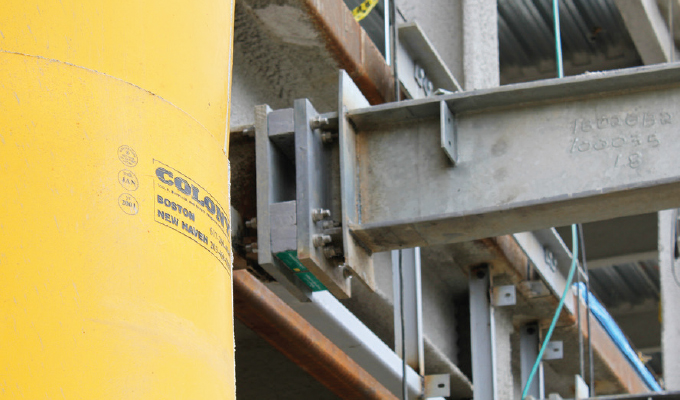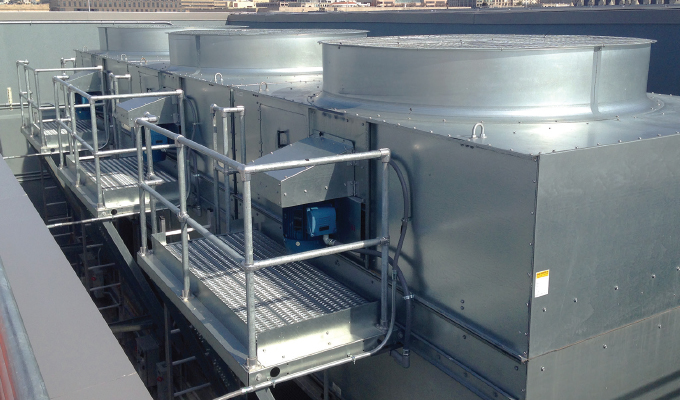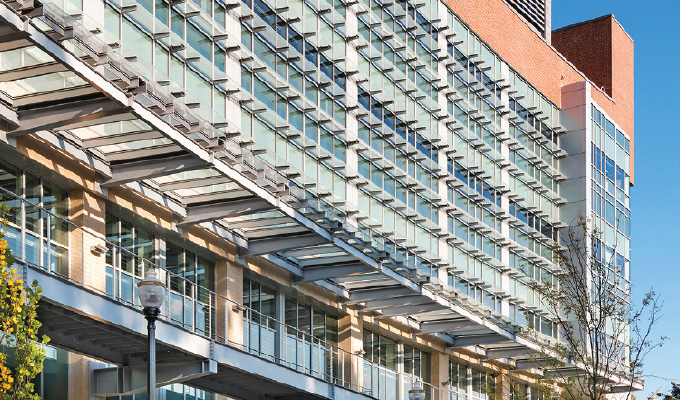Part one of this article introduced thermal bridging and its consequences; part two discussed the options to address thermal bridging. In part three of this series, examples of steel buildings constructed using thermal breaks are presented.
REAL-WORLD EXAMPLES
Life Sciences Lab Building at the University of Massachusetts:

The University sought to reduce thermal energy loss due to thermal bridging where 40 steel cantilevers that support a canopy above an external walkway penetrate the building envelope. Isokorb® Type S thermal breaks were installed at each penetration point, providing continuous insulation and reducing heat loss by approximately 50 percent at those points.
The use of thermal breraks—plus the deployment of energy efficient plumbing, chillers, ventilation, and lighting systems—enabled the University to save approximately $300,000 a year in energy costs and achieve LEED Gold certification. Preventing thermal bridging also protects the structure from condensation and rust damage and eliminated conditions that could cause mold growth, which might adversely affect the health of building occupants.
National Museum of African American History and Culture, Washington, D.C.:

The Museum houses priceless artifacts that must be protected from interior condensation. At the same time, the Museum must provide a comfortable interior for visitors and staff in an energy efficient manner.
Doing so involved insulating the building envelope where support structures for rooftop chillers penetrate the envelope and could lead to heat loss and condensation on interior surfaces. An additional design change called for swapping out a chilled water connection with rooftop cooling towers, leaving an area of the rooftop unprotected and subject to a substantial thermal bridge directly over exhibit space.
Isokorb Type S load-bearing thermal breaks were installed to insulate and support the cooling tower columns where they penetrated the building rooftop. The thermal breaks prevented conditions that could lead to condensation and mold growth, and helped the Museum reduce energy loss by 50 percent at each penetration point and maintain humidity levels to protect the artifacts inside.
CLOSING THOUGHT
Addressing thermal bridges will improve insulation efficiency so large amounts of heat energy will not continue to escape the building.
For more information
For more about Schöck North America and thermal bridging, visit www.schock-na.com.
Modern Contractor Solutions, May 2020
Did you enjoy this article?
Subscribe to the FREE Digital Edition of Modern Contractor Solutions magazine.



